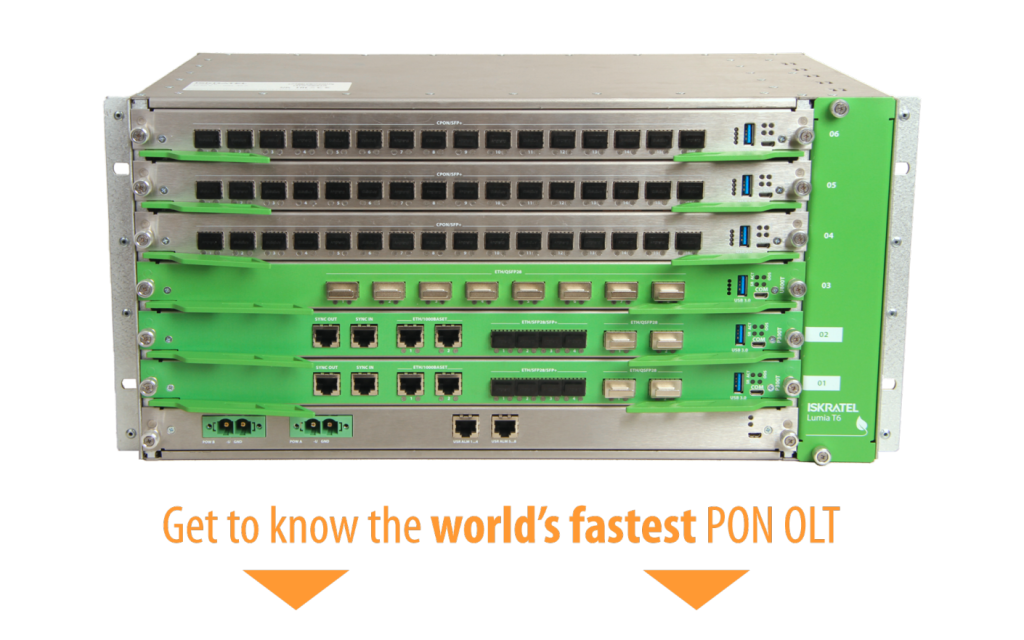PON evolution beyond 10G: 25G or 50G?
by Simon Čimžar, CTO Business unit Broadband
Where do we go from the current 10-gigabit PON era? Which one is the next winner, 25-gigabit or 50-gigabit PON? What have we learned from the past upgrade cycles?
Head in the clouds…
The pandemic times we have hardly left behind have boosted the demand for data-intense communication with reliable delivery immensely, and beyond all levels foreseen.
Analyses show that internet traffic has soared by 60% compared to pre-corona times. This is making operators increasingly aware that perpetual increases of data rates have become a new norm to end users.
But it is really just about faster and faster internet? What has happened to the goal of “fibre-to-everything”?
And where do we go from the current 10-gigabit PON era, to 25-gigabit or 50-gigabit speeds?
…well on the ground
Let’s stop and have a quick look at the facts first.
- XGS-PON is a widely used and the most cost-effective 10-gigabit PON technology today. Its symmetrical data rates provide operators with the ability to deploy a unified, converged network architecture for business, mobile and residential services alike.
- There is a rumble among the tech giants in the industry. Some favour evolution to 25G PON, others to 50G PON. Admittedly, both technologies can coexist with existing GPON or XGS-PON deployments; this is undoubtedly crucial for the continuity of network evolution – and for keeping investment costs under control.
- Clearly, 50G PON offers twice the data rates than its 25G PON counterpart.
- A less known fact is that while 50G PON is a formal industry standard adopted by the ITU-T in its Recommendation G.9804 (“Higher Speed PON”), the 25G PON is not standardised; the former is only based on a multi-source agreement dubbed “25GS-PON”.
Business needs kick in
Real-time data processing of big data, the use cases of industry 4.0, and the introduction of millimetre-wave 5G mobile transport are perceived as the next big thing for creating new revenue streams. Regardless of whether they make it there or not, they are all reliant on fibre-network infrastructure and can’t do without it. As they progress, the use cases will eventually require data rates beyond what 10-gigabit PON can offer.
This leaves us all in the industry with two key questions: when to migrate to the next PON technology, and how much the migration will cost?
My take on the matter
Taking into account the experience from previous technology migrations – such as the one from gigabit (GPON) to 10-gigabit (XGS-PON) era –, the current demands for data rates and the current stage of 10-gigabit rollout, we can expect to see the move to the next-generation PON somewhere in the range of four to seven years.
The experience also tells us about what to expect in terms of price degradation and technology standardisation; let us not be blind for the fact that forward-thinking operators favour standardised technologies.
The next step: 25G or 50G?
Given the anticipated investment in the migration, we can safely expect operators and investors to prefer leapfrogging directly to the five-fold increase of capacities over insignificant and overly expensive evolutionary steps.
There shall be room for 25G PON in certain limited-scale use cases in the near future. But my verdict is clear: The next massive technology-upgrade cycle will introduce 50G PON technology. And its initial implementation will be a combination of XGS-PON and 50G PON on the same product.
Future, prove me wrong!
Related articles

Unlocking invaluable benefits for fibre rollouts with interoperability
Learn more
Maintaining CPE Sustainability Every Step of the Way
Learn more
Investing in the right equipment vendor can unlock your network deployment
Learn more






